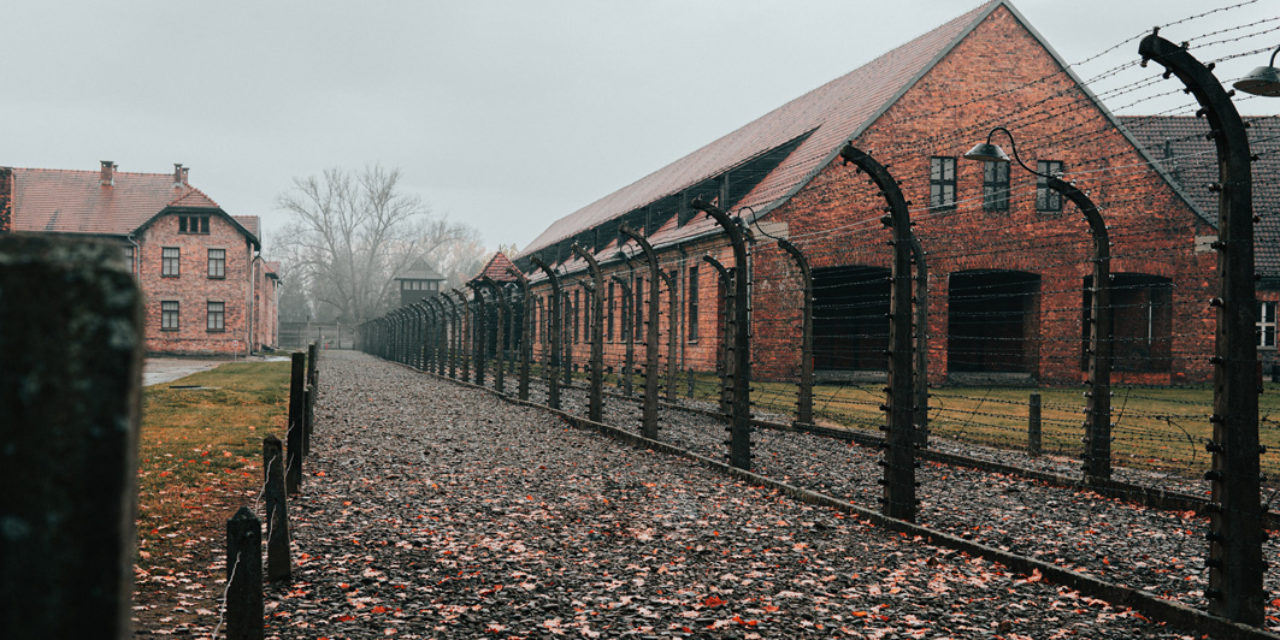Today is the 75th anniversary of the liberation of Auschwitz-Birkenau, the world’s largest factory of death. However, it seems like the memory and uniqueness of that terrible place, and the Holocaust in general, is slowly decreasing.
According to a survey completed in 2018 by the Conference on Jewish Material Claims Against Germany, a staggering two-thirds of American Millennials and 44% of the general population could not identify Auschwitz. When it comes to general knowledge, 11% of adults and 22% of Millennials haven’t heard or were not sure if they’ve heard of the Holocaust. A shocking 41% of Millennials and 31% of adults thought that fewer than two million had been killed. About half of both groups could not identify a concentration camp or a ghetto.
That’s both a poor reflection on our American education system and general American awareness on events in world history.
It also doesn’t help when politicians compare the detention centers on the Texas border to “concentration camps.” The historic comparison to American slave trade or currently the plight of abortion in this country isn’t really applicable either. While there are definitely specific situations where the comparisons could work, by and large they’re insufficient.
This is because the Holocaust is utterly unique in the history of atrocities and genocide, without comparisons or equals, and here’s why: It almost succeeded in completely wiping out an entire group of people off the face of a continent. If Germany had been victorious, there would likely be no more Jews in Europe or anywhere the regime touched.
No other genocide in history has achieved that unique and terrible distinction, not even close.
What the Nazis set up was truly a machine of death that was nearly perfect in killing people quickly, efficiently and destroying all the evidence.
So, what is the Holocaust? The question about how to enact the so-called “Final Solution to the Jewish Question” came about during a meeting of some higher-level Nazi officials at what is called the Wannsee Conference in January 1942. There the officials, including most notably Reinhard Heydrich and Adolf Eichmann, discussed how they could more effectively eliminate the Jews.
At that point in the war, most of the mass killing was being done by the Einsatzgruppen, a mobile death squad tasked with following behind the Nazi troops invading the Soviet Union and killing every Jewish man, woman and child they found. The men would usually gather the Jews in a location outside the town or city where they would take all their possessions, including their clothes, and then dig a mass grave or use a ravine, quarry or mine where they would shoot everyone at point blank range in a way that would allow them to fall into the pit or have them lay in the location of their death.
The most famous example of this mass murder is Babi Yar, where the 33,771 Jews of Kiev, Ukraine were murdered in from September 29-30, 1941. There are only 29 known survivors.
A truck driver named Höfer described the scene like this, “Once undressed, the Jews were led into a ravine which was about 150 meters long, 30 meters wide and a good 15 meters deep. Two or three narrow entrances led to this ravine through which the Jews were channeled. When they reached the bottom of the ravine, they were seized by the members of the Schutzpolizei and made to lie down on top of the Jews who had already been shot. This all happened very quickly. The corpses were literally in layers. A police marksman came along and shot each Jew in the neck with a sub-machine gun at the spot where he was lying. When the Jews reached the ravine, they were so shocked by the horrifying scene that they completely lost their will. … It went on this way uninterruptedly, with no distinction being made between men, women and children. The children were kept with their mothers and shot with them.”
After killing the Jews, the Nazis continued to use Babi Yar as the site for the executions of more Jews and other groups, like the Gypsies. To cover up their crimes, the Nazis had Soviet prisoners of war dig up the ravine and destroy the remains so that they could eliminate all the evidence.
It’s hard to comprehend that level of death and destruction. What those two days of terror were like for the victims is unimaginable, and scenes like that happened throughout the Soviet Union. It is estimated that the Einsatzgruppen troops killed more than 1.25 million Jews and others through this method.
But for the higherups this was somewhat of a problem. It wasn’t the destruction of over a million lives, but the use of millions of bullets and the unforeseen effect it was having on the troops. The brass failed to realize that killing so many would have such a detrimental impact on the troops. So, the Wannsee Conference officials put together a new approach, and death camps were born.
The first concentration camp, Dachau, opened in Germany in 1933 and others throughout Germany, Poland and other Nazi controlled territories, were designed to kill through forced labor, disease, starvation and other factors. Death camps would be different. Instead of killing through secondary factors, the camps would just kill the prisoners en masse.
Chelmno was the first death camp. The prisoners, mainly Jews and some Gypsies, were killed by a van that was hooked up to an exhaust pipe. The Jews would be killed and then driven to a location for burial. Three of these gas vans killed 300,000 Jews. Only three Jews survived—that’s just .001%.
Other camps included Belzec, Sobibor and Treblinka. In these three camps alone, roughly 1.7 million Jews, mostly from Poland, were killed.
The most famous death camp is Auschwitz II-Birkenau, the camp responsible for murdering roughly one million Jews. The crematories of the camp were running nearly 24/7 to keep up with the amount of victims, and sometimes the Jews tasked with running the gas chambers, known as the Sonderkommando, would be forced to burn the bodies out in the open to keep up with the number of victims (a photo, one of four ever taken of mass murder at Auschwitz, demonstrates this). In another example of the calculated nature and dedication of the Nazis to eliminate eyewitnesses of their crimes, the Sonderkommando were always killed after a couple of months in the same gas chamber where they worked and a new group brought in.
What’s shocking is that the majority of the six million murders occurred from 1942 onwards, when death truly became the end goal of everything. It’s hard to imagine the suffering, the mothers who were forced to calm their children while they walked to their deaths in a gas chamber and the workers who were forced to participate in the mass murder of their own people before being killed by the instrument of death they knew so well.
It’s shocking, horrifying and unimaginable. But it did happen. It’s estimated that 60% of the world’s Jewish population was destroyed. In Poland, it was the most staggering with 90% of the Jewish population killed, bringing the population from three million down to 45,000. That’s so, so many people, families and communities that were completely eliminated.
This is why comparisons to abortion, the slave trade and the detention of immigrants at the border should always fall flat. The Holocaust is unique, and it deserves its place in history.
So, as we memorialize the 75th anniversary of the liberation of Auschwitz on International Holocaust Memorial Day, it is important to not only remember the lives lost but to understand its uniqueness in history as well. There is a natural inclination to compare and, for example, call abortion in America the “American Holocaust” or just call it the “European Holocaust.” Those statements, though perhaps well-meaning in some instances, deny and minimize what the Nazis intended to accomplish and probably would have if they had been victorious.
The dedication of the Nazis to eliminate the Jewish people in every way possible should continue to haunt us. It does for me at least.






